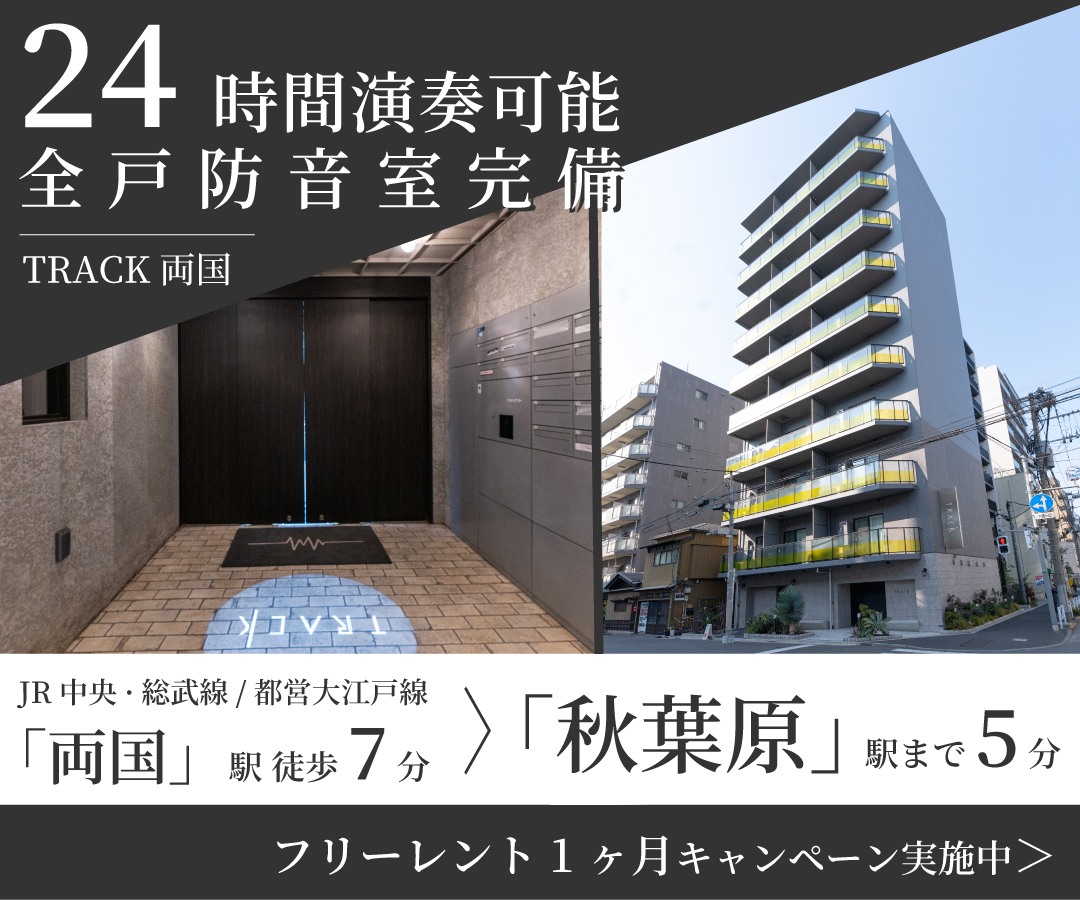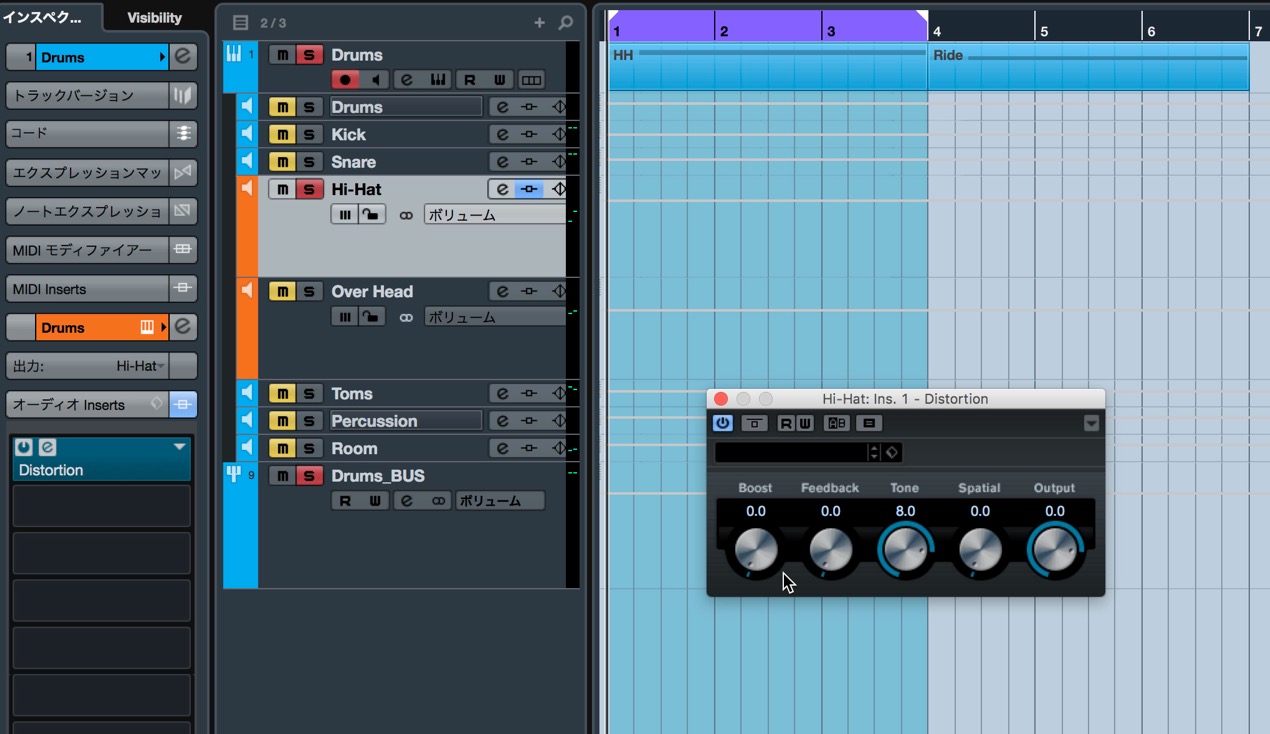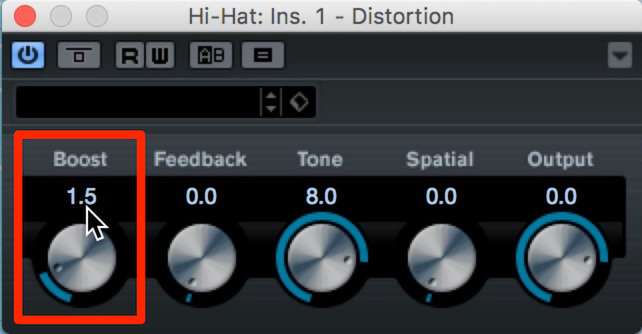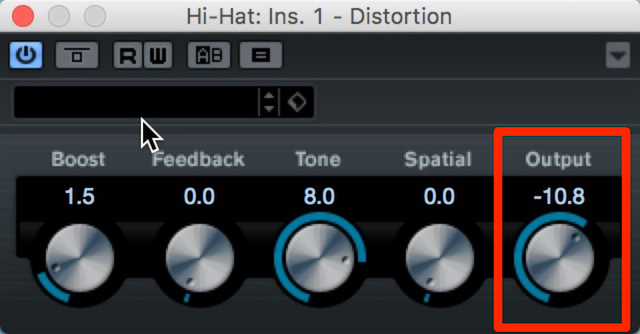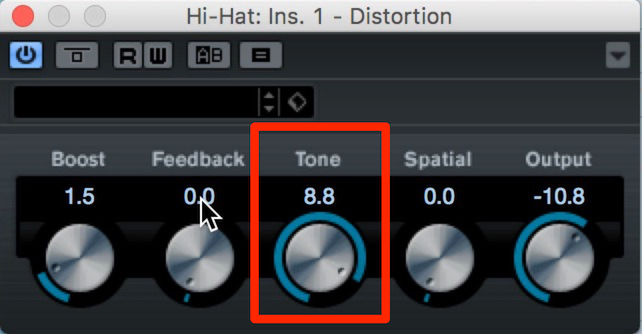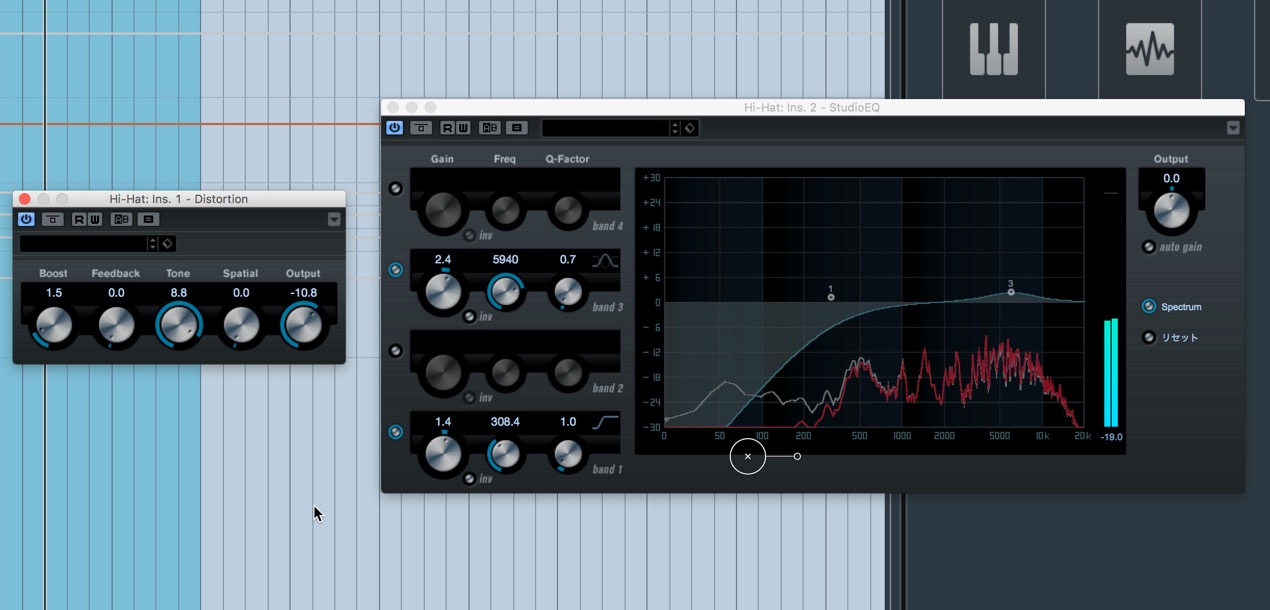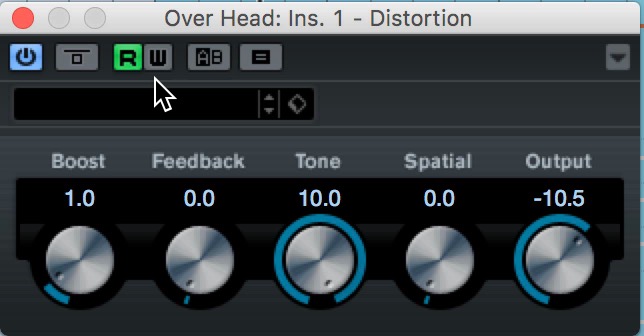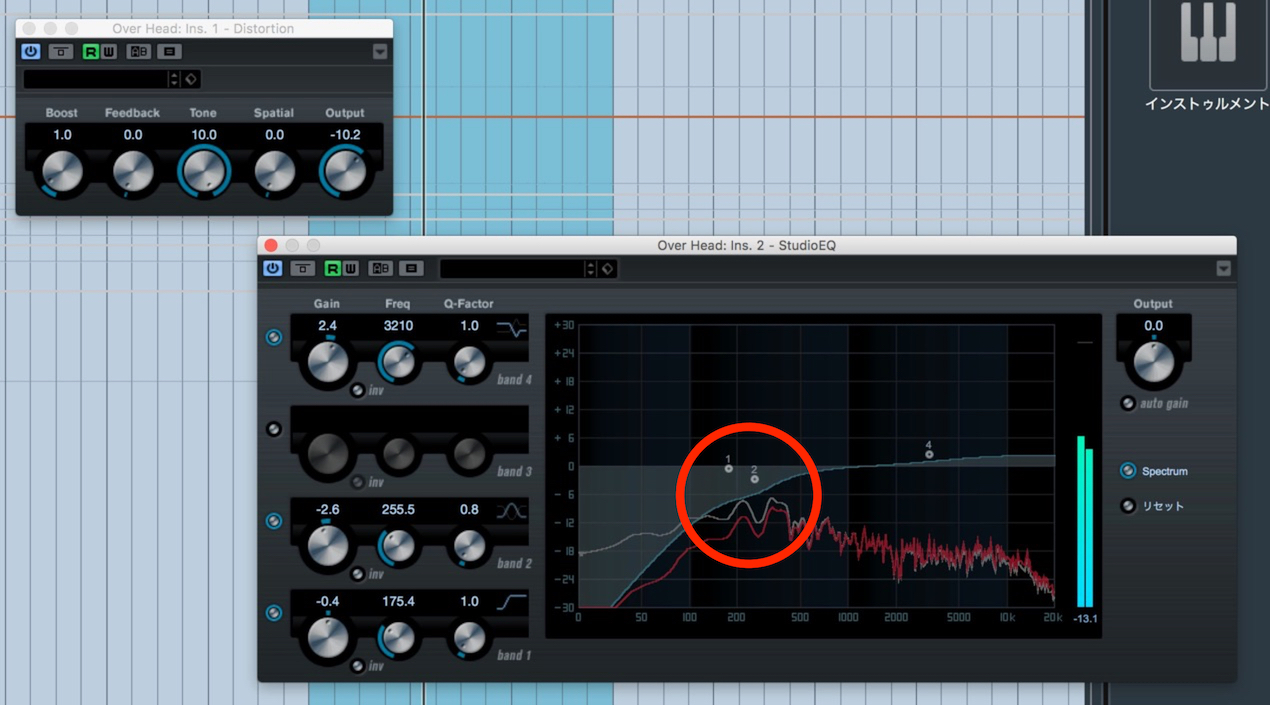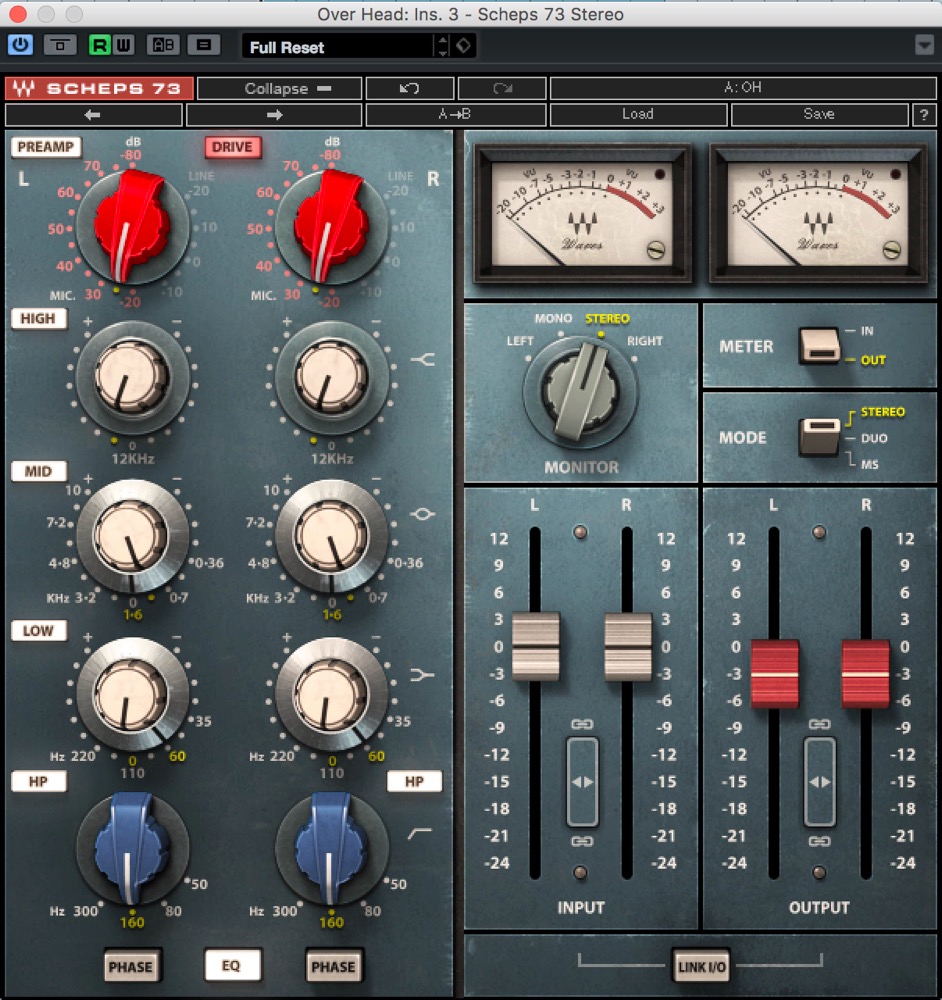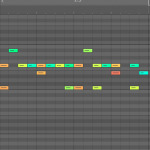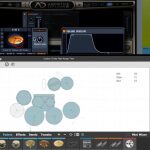ドラムの金物にディストーションをかける
ミックス用途としてのディストーション

ドラムをミックスする際、「ハイハットやシンバルの音が綺麗すぎてミックスに馴染まない」
あるいは「線が細すぎてミックスに埋もれてしまう」、といったことがよくあると思います。
その際EQやコンプで調整するのもいいのですが、より積極的に音質を変える手段として、
ディストーションの使用をおすすめします。
以下の音源を、金物の音に注目して聴いてみて下さい。
- ディストーションなし
- ディストーションあり
「ディストーションあり」の方が、より金物らしい存在感が出ていますね。
それでは、設定方法を見ていきましょう。
ドラムの金物にディストーションをかける 解説動画
ハイハットへのディストーション適用
今回はパラアウトしたドラム音源を例に進めていきます。
多くの生ドラム音源では、ハイハットのオンマイクのチャンネルが用意されています。
まずそこにディストーションをインサートしていきましょう。
入れただけでも少し音質が変化しますが、ここから各パラメーターを調整していきます。
ドラムセット全体や、楽曲内でのバランスを確認しながら操作してください。
まずは「Boost」です。ディストーション効果の強さを決めます。
あからさまに歪んだ音は狙っていませんので、ほんの少し上げておきます。
Boostを上げると同時に音量が上がりますので、
原音と変わらない程度になるよう「Output」を調整します。
エフェクト全般に言えることですが、純粋な効果を確認するためには、
極力音量を変化させないことが肝要です。
最後に「Tone」を調整します。
これは高域を調整するパラメーターで、値を小さくするほどこもった音になります。
こちらも大きく音質を変えない程度にしておきましょう。
設定が終わったらバイパスと聴き比べて、効果を確認します。
上記のようにほんの少し歪ませることで、ミックスに馴染みつつも存在感が出てきているはずです。
ディストーションの効果とその後の処理への影響
ディストーションは、擬似的に過大入力状態を作ることにより以下の効果をもたらします。
- 波形が矩形波に近づくため、倍音が付加される
- 音量を底上げしながら潰すので、簡易的なコンプ効果が得られる
金物は元倍音を豊富に持っていますので、そこが強化されるイメージです。
また簡易コンプ効果により、クローズドとオープンの音量差を縮めたり、
金物特有の余韻の伸びを持ち上げる効果も期待できます。
もちろん、その後にEQやコンプで整えていくことになりますが、
金物の下処理として非常に使いでのあるエフェクターだということが言えます。
例えば、ハイハットに対して以下のようなEQ処理を行う場合、
その前にディストーションをかけるかかけないかで、特に高域のEQの効き方が大きく変わってきます。
オーバーヘッドへのディストーション適用
ハイハット以外の金物は、オーバーヘッドマイクでまとめて収録している音源も多いと思います。
オーバーヘッドにディストーションを適用する場合、金物以外にも様々な音が混ざっているため、
少し注意が必要です。
- Boostはオンマイクよりも更に控えめ
- シンバルの高域を生かすため、Toneは下げない
もちろん曲調にもよりますので、上記はあくまで一般的な傾向と捉えてください。
また、ソースによってはディストーションをかけると中低域が膨らむ場合があり、
オーバーヘッドに含まれるスネアの音が重たくなってしまう等の影響が出ることもあります。
その場合は、EQで軽く中低域を抑えてみる、といった工夫を行ってください。
様々な歪み系エフェクターを試してみる
DAW標準のディストーションだけでなく、世の中には多くの歪み系プラグインが存在します。
それぞれ特徴がありますので、お気に入りのものを探したり、ソースによって使い分けたりするのも
また面白いです。
例えば、このようにEQのプリアンプ部で歪ませるタイプのプラグインでは、
ディストーション効果と同時にEQ処理も同時に行っていけますので、非常に便利です。
このような記事も読まれています
パラアウト_ParallelOut
1つのハード/ソフト機器の音を別々に出力する機能のことで、各出力音に違うエフェクトをかけるなど柔軟なエディットが可能。
ミキサー画面 & パラアウト
BFD内蔵のミキサーの操作方法と、パラアウトしてDAWで各チャンネルを調整する方法を解説します。
生っぽいドラムの打ち込み(ベロシティ編)
音楽にとって重要な要素「強弱」この部分を整えておくと、上に乗る楽器達の聴こえ方も変わってきます。ここではそのコツを解説していきます。
シンバルロール/チョークの打ち込み
シンバルサウンドの長さをコントロールし、楽曲のキメにタイトな印象を与える手法や、バラードなどでも使用頻度が高い連打による定番フェード奏法を解説していきます。
